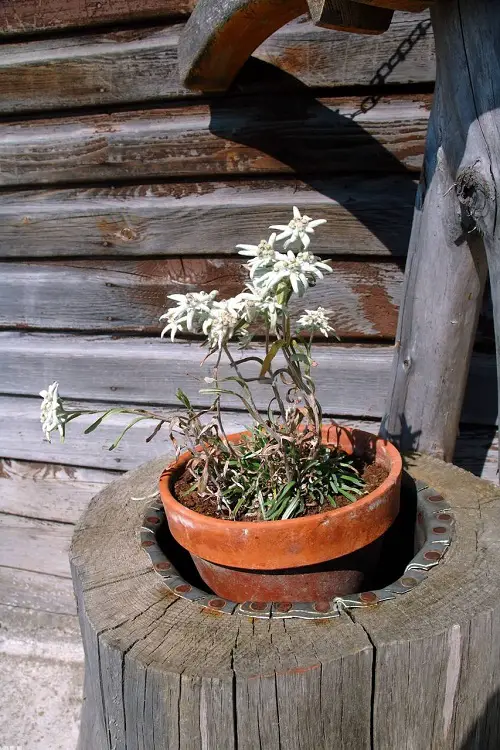Edelweiss Flower stands out with its elegant white blooms. It is also really easy to look after, which makes it perfect for newbie gardeners!

Edelweiss Flower is a beautiful and low-maintenance plant that features elegant, soft, velvety petals and snow-white blooms. This article will guide you on how to grow and care for this plant.
Botanical Name: Leontopodium alpinum
USDA Zones: 4-8
Look at the Flowers That Look Like Fire and Flame
Edelweiss Flower Information
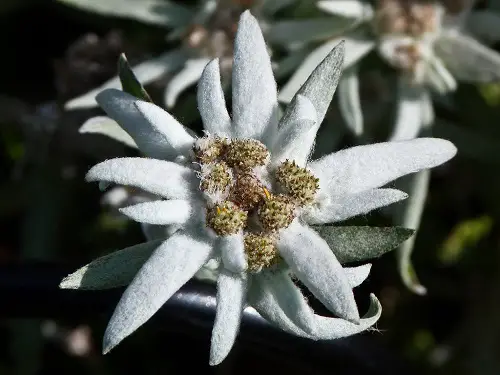
Native to the European Alps, the Edelweiss Flower is a small, white flower . This flower is associated with the rich culture of the region.
It is well adapted to the cold, harsh climate of the mountains. This perennial plant blooms from late June to early August. The flowers are star-shaped, about 1-2 cm in diameter, and feature five petals and a tuft of white hairs in the center.
Edelweiss Flower has a strong, sweet scent. It is often used in perfumes. The edelweiss is also a popular motif in traditional Alpine folk music and culture.
Edelweiss Flower Meaning and Symbolism
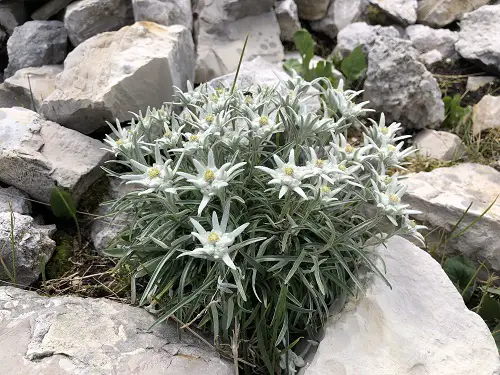
Edelweiss flower symbolizes purity, strength, and courage. It is thought to bring good luck to those who have it. This flower has long been associated with love and romance and is often given as a token of devotion. In some cultures, it is believed that the flower wards off evil and brings protection.
Explore the Lotus Flower Meaning and Symbolism
Best Pot Size for Edelweiss Flower
You can start growing Edelweiss Flower in a 6-8-inch pot, which will be good for 2-3 years. After that, depending on the growth and spread, repot into a one-size-bigger container than the old one.
Propagating Edelweiss Flowers
1. Division: To start, carefully dig up the entire clump of edelweiss flowers. Gently apart the roots and separate the clump into smaller sections. Each section should have at least two shoots and established roots. Plant each section in its own pot with well-draining soil. Place the pots in a sunny location and water well.
2. Cuttings: In the spring or summer, take cuttings from an existing Edelweiss Flower plant. Choose healthy, non-flowering stems and cut them just below a leaf node. Dip the cut end into the rooting hormone. Plant the cuttings into a pot filled with a well-draining potting mix. Place the pot in a warm and sunny location and water regularly. Roots should form in a few weeks.
Requirements for Growing Edelweiss Flower
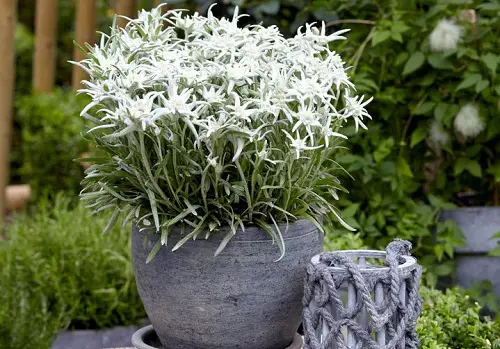
Sunlight
Edelweiss flowers require bright sunlight. Also, protect the plant from the extreme afternoon heat.
They grow best in areas with full sun in the morning and some shade in the afternoon. For best blooms, the plant needs a minimum of 4-6 hours of sunlight every day.
Soil
It prefers well-draining soil that is rich in organic matter. It does not tolerate wet soil, so make sure to plant it in a location with good drainage.
You can also mix some sand into the growing medium for proper drainage.
Watering
Edelweiss flowers prefer moderate moisture levels and should not be overwatered. Water this plant deeply but infrequently. Allow the soil to dry out slightly between waterings.
However, the moisture requirements can differ depending on your region or climate, so be careful.
Temperature and Humidity
These flowers require cool temperatures between 40-70°F (4-22°C). They prefer cooler temperatures during the day and slightly cooler temperatures during the night. They can tolerate temperatures down to 35°F (2°C) for short periods of time.
These plants prefer moderate to high levels of humidity and will do best in a location with an average relative humidity of around 50%. Ideally, the level should not drop below 40%.
Check out Best Indoor Flowers that Literally Bloom in Homes
Edelweiss Flower Care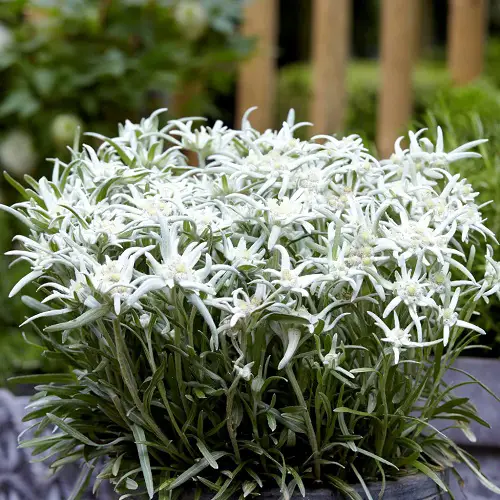
Fertilizer
Edelweiss flowers do not have any specific fertilizer requirements. Use a balanced liquid fertilizer once in 7-8 weeks to boost the growth. A light application of compost or manure can also be added in the spring.
Pests and Diseases
Common pests that attack the Edelweiss flower are aphids, spider mites, and caterpillars, which can cause damage to the leaves and flower buds. Use insecticidal soap to get rid of them.
Diseases that affect this flower include powdery mildew, rust, and botrytis. All of these can cause the leaves to yellow and the flower to become discolored or withered. Make sure the plant gets plenty of sunlight and air circulation. Also, avoid wetting the foliage.


